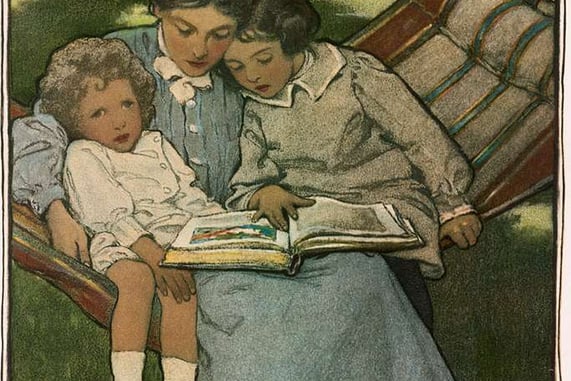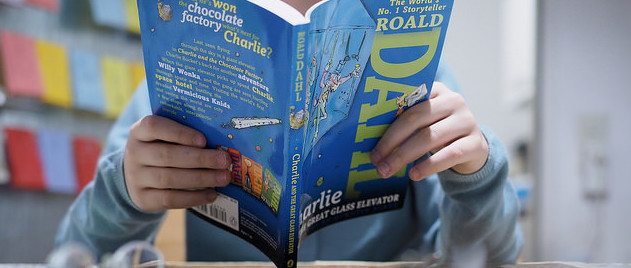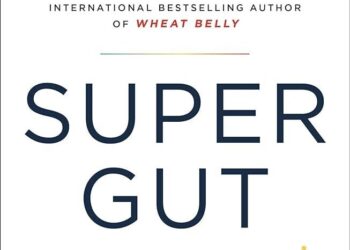Table of Contents
ToggleIntroduction
Childrens Literature That Stands The Test Of Time Children’s literature reflects cultural ideals, social conventions, and universal human experiences, and it is much more than just a genre written for younger readers. Some children’s books have endured for generations, connecting with readers of all ages and continuing to be relevant long after they were first published.
In addition to providing readers of all ages with entertainment, these timeless classics also educate, uplift, and stimulate the imagination.
Some children’s novels have a remarkable tendency to endure over time because of their universal themes, evocative characters, and capacity to explore difficult emotions in ways that appeal to readers at all stages of life. Children’s literature offers a diverse range of stories that enthrall new generations of readers, from traditional fairy tales and adventures to contemporary works that sensitively address difficult issues.
The Timeless Appeal of Classic Children’s Literature
Childrens Literature That Stands The Test Of Time Children’s literature encompasses a wide range of works, from early folktales and fables to epic stories of adventure. However, there are a select few that continue to be read and loved by new generations, often becoming staples of childhood. What is it about these works that allows them to endure, even as the world around them changes?
Universal Themes and Emotional Resonance
One key factor in the lasting success of children’s literature is its exploration of universal themes—love, friendship, loss, and courage. These themes are relatable to readers of all ages and backgrounds, regardless of when or where they live. A child’s need for companionship, a desire for adventure, or the experience of fear and triumph are emotions that transcend time, culture, and geography. Books such as The Lion, the Witch and the Wardrobe by C.S. Lewis and Charlotte’s Web by E.B. White appeal to readers not just because of their fantastical elements, but because they address real and relatable emotions in a way that resonates deeply.
Vivid Characters that Grow with Us
In many of the timeless children’s classics, it’s not just the plots that endure, but the unforgettable characters. From the brave and curious Alice in Alice’s Adventures in Wonderland to the lovable but sometimes mischievous Peter Pan, these characters are more than just vehicles for storytelling—they are vessels through which readers experience the complexities of growing up.
Childrens Literature That Stands The Test Of Time These beloved figures often exhibit traits that children can identify with, but they also model qualities that readers of any age can admire: bravery, resilience, empathy, and imagination.
Take, for example, Anne of Green Gables by L.M. Montgomery. Anne Shirley, the imaginative and spirited orphan, is an enduring figure in children’s literature because her emotional depth, optimism, and flaws make her relatable across generations. Whether readers are experiencing the book as young children, adolescents, or as adults revisiting Anne’s adventures, her growth from a misunderstood girl into a confident woman speaks to readers at every stage of life.
Read More
Imagination and Fantasy as Vehicles for Understanding
Fantasy and imaginative worlds provide a sense of escape for young readers, but they also function as metaphors for deeper life lessons. Works like Peter Pan by J.M. Barrie or The Wonderful Wizard of Oz by L. Frank Baum transport readers into fantastical realms where the ordinary rules of life are suspended, allowing for exploration and discovery. However, these stories also tackle themes like responsibility, loss, and the search for belonging, making them relevant not only in childhood but throughout one’s life.
Childrens Literature That Stands The Test Of Time In Peter Pan, for instance, the concept of Neverland, a place where children never grow up, serves as an allegory for the innocence and carefree nature of childhood.
Yet, as Wendy and the Lost Boys come to realize, the idea of eternal childhood can be an illusion. This tension between innocence and the inevitability of growing up is a central theme that resonates deeply with readers.

The Impact of Early Works of Children’s Literature
Many of the most cherished books in children’s literature come from an earlier period, often dating back to the 19th and early 20th centuries. These books, though written in a different time, still carry forward lessons that remain relevant today. The foundations of children’s literature were built on narratives that blended adventure, moral lessons, and empathy, offering young readers new worlds to explore.
The Fairy Tale Tradition
Fairy tales, many of which originated in Europe, represent some of the oldest forms of children’s literature. These stories, often originating in oral traditions and later written down by authors such as the Brothers Grimm, Hans Christian Andersen, and Charles Perrault, still enjoy widespread popularity today. Although these tales may appear simplistic, they often contain complex messages about good versus evil, personal growth, and the consequences of one’s actions.
The enduring popularity of tales like Cinderella and Little Red Riding Hood is not just due to their magical elements, but also because they speak to the moral lessons and emotional conflicts that resonate universally. These tales allow children to explore the idea of justice and fairness while also presenting the challenges of navigating a sometimes dangerous world. Even in the modern age, retellings and adaptations of these classic fairy tales continue to captivate audiences, whether in literature, film, or other forms of media.
The Adventures of Tom Sawyer and the Allure of Childhood Freedom
Mark Twain’s The Adventures of Tom Sawyer (1876) offers another example of timeless children’s literature. This story about a young boy’s mischievous adventures in a small town is celebrated for its depiction of childhood freedom, friendship, and discovery.
Tom’s sense of adventure and his ability to break free from societal expectations resonate with readers of all ages, particularly because the world Twain created feels so universal. While the book has some elements rooted in its 19th-century context, its portrayal of childhood innocence and the importance of individual agency transcends its era, making it a lasting classic.
The Evolution of Children’s Literature in the 20th Century
As the world entered the 20th century, children’s literature evolved significantly, particularly with the rise of new genres and the increasing recognition of childhood as a stage of life that required its own distinct form of storytelling. Writers like Beatrix Potter, E.B. White, and Roald Dahl brought a sense of humor, playfulness, and moral depth to their works, leaving an indelible mark on children’s literature.
E.B. White’s Contribution to Modern Classics
E.B. White’s Charlotte’s Web (1952) stands as one of the most beloved children’s books of all time, not just for its adorable animal characters but for its heartfelt exploration of themes like friendship, life, death, and selflessness. The emotional resonance of Charlotte’s sacrifice for Wilbur the pig, and Wilbur’s ultimate realization of the importance of love and loyalty, are timeless lessons for both children and adults.
The simplicity of White’s language, combined with the emotional depth of the story, ensures that Charlotte’s Web remains a central fixture in children’s literature and continues to be shared across generations.
Roald Dahl: A Master of the Unexpected
Roald Dahl, whose career as a writer spanned several decades, is known for his quirky and often dark sense of humor. His books like Charlie and the Chocolate Factory (1964), Matilda (1988), and James and the Giant Peach (1961) are more than just wild adventures; they are layered with social commentary about inequality, empowerment, and the value of imagination.
Dahl’s works are also notable for their imaginative elements, with larger-than-life characters and surreal settings that appeal to the innate sense of wonder that exists in all children. His ability to balance humor with deeper lessons about right and wrong, and his unique knack for creating characters that young readers can both love and despise, make his books beloved by generations of readers.
Contemporary Works That Will Endure
While much of the timeless nature of children’s literature comes from books written in previous centuries, contemporary works are also earning their place in the literary canon. Books from the late 20th and early 21st centuries continue to capture the imaginations of children while also addressing relevant social issues. Writers today are building on the foundation laid by their predecessors, creating works that are both innovative and enduring.
J.K. Rowling and the Legacy of Harry Potter
The Harry Potter series by J.K. Rowling has become a global phenomenon, not just for its magical world but for its universal themes of friendship, love, bravery, and the battle against evil. What began as a story about a young boy discovering he is a wizard has grown into one of the most iconic pieces of children’s literature in recent history.
The series’ wide appeal, from its relatable characters to its moral exploration of power, prejudice, and resilience, ensures its place in the literary world for generations to come.
Childrens Literature That Stands The Test Of Time The popularity of the Harry Potter series shows how contemporary works can draw on the timeless themes of adventure, growth, and identity that have been central to children’s literature for centuries.
Read More
The Modern Fable of The Hunger Games
Childrens Literature That Stands The Test Of Time Suzanne Collins’ The Hunger Games (2008) series is another example of contemporary children’s literature with lasting power. The dystopian themes of the series, while addressing modern concerns about power, survival, and sacrifice, are framed in a way that resonates with young readers.
Childrens Literature That Stands The Test Of Time The books’ critique of societal systems, coupled with the strength and courage of Katniss Everdeen, the protagonist, provide a powerful story that both entertains and encourages critical thinking about the world.

Conclusion
Childrens Literature That Stands The Test Of Time Because of its capacity to tackle universal topics and cultivate emotional bonds between generations, children’s literature continues to be a timeless aspect of the human experience. The best children’s novels continue to enthrall readers by examining the victories, setbacks, and realities of growing up, whether through traditional fairy tales, 19th-century adventures, or modern fantasy.
Every book that has endured the test of time, from the works of Beatrix Potter and Mark Twain to the fantastical realms of J.K. Rowling and Suzanne Collins, has one thing in common: they address the essential elements of life to readers of all ages. They offer solace, happiness, moral guidance, and the chance to dream. Children’s literature’s lasting influence serves as a reminder of how stories have the ability to influence how we perceive the world and our role in it.
Read More
FAQ
1. Why do some children’s books stand the test of time?
Children’s books that stand the test of time often tackle universal themes such as friendship, courage, love, and loss. They feature relatable characters and address emotional truths that resonate across generations, making them timeless.
2. What makes Harry Potter such an enduring children’s series?
The Harry Potter series appeals to readers because it combines a magical world with relatable themes of friendship, bravery, identity, and the battle between good and evil. Its universal themes, well-developed characters, and captivating plotlines ensure its lasting popularity.
3. Are classic children’s books still relevant today?
Yes, classic children’s books remain relevant today because they address fundamental aspects of human experience that transcend time and culture. Books like Charlotte’s Web and The Adventures of Tom Sawyer continue to offer moral lessons, emotional depth, and universal themes that resonate with modern readers.
4. How have modern children’s books evolved from the classics?
Modern children’s books have evolved by incorporating contemporary issues, diverse characters, and different cultural perspectives. While maintaining the themes of adventure and imagination, today’s authors often explore more complex social, political, and personal challenges faced by young readers.
















